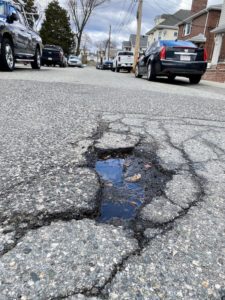Who is a member?
Our members are the local governments of Massachusetts and their elected and appointed leadership.

Spring weather brings more potholes and more claims for vehicle damage.
With the arrival of spring weather conditions, MIIA is seeing a large volume of claims for property damage to vehicles because of potholes and compromised road conditions.
Claims for defects in or on public ways in Massachusetts are governed by Section 15 of Chapter 84, which sets forth conditions necessary to establish liability and establishes a maximum damage cap of $5,000.
Two elements of the law are particularly important from a municipal risk management perspective.
Breach of duty
A breach of duty claim requires two key elements: notice of the condition, and an opportunity to repair the defect. Someone filing a claim must establish that the municipality had either actual or constructive notice of the defect prior to the accident. The claimant must also prove that the municipality had a reasonable opportunity to repair the defect prior to the loss and failed to do so.
Notice of claim
A person intending to file a road defect claim must provide written notice to the municipality within 30 days of the incident. The written notice must contain specific information sufficient to allow a municipality to investigate.
From a risk management perspective, it is essential that a municipality be able to demonstrate when they received notice of the defect and document the time and date of their repair response. What constitutes a reasonable response is fact-specific as to the nature of the defect and proximity to weather conditions.
Maintaining some type of tracking log is a critical best practice. This log can be something as simple as a spreadsheet. (Download MIIA’s Pothole Log.) There are also applications available that allow for tracking as well as the ability to upload photographs of repair responses. The key is to be able to establish that you have a system to track and document notice of defects and the time and date of your response following notice.
Written by Lin Chabra, MIIA Senior Manager of Risk Management